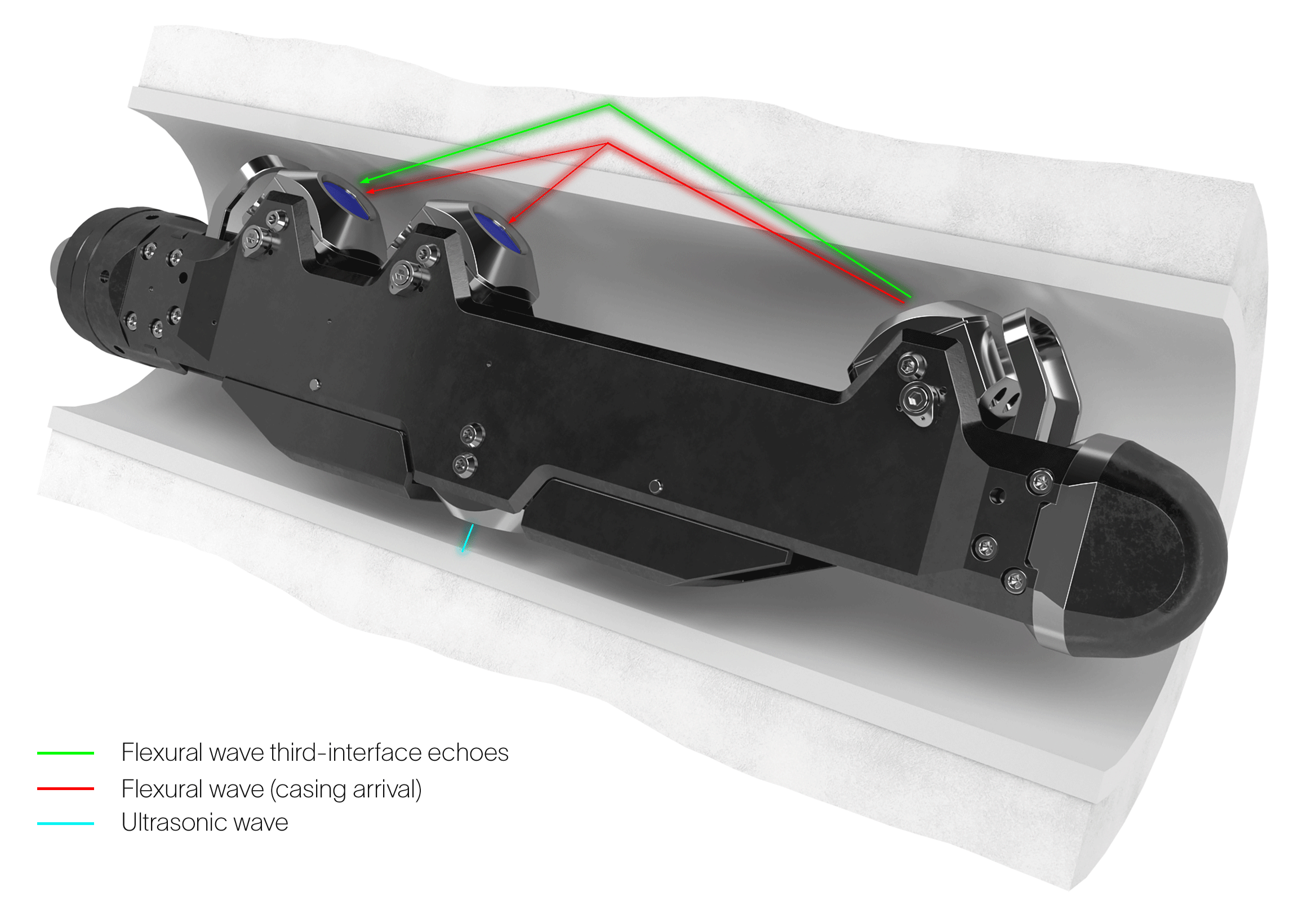Slim Multielement Cement and Corrosion Tool
Inner- and outer- pipe corrosion and cement bond evaluation
Pulse-echo ultrasonic casing evaluation service without the need for a rig.

Isolation Scanner™ cement evaluation service integrates the conventional ultrasonic pulse-echo technique with flexural wave propagation to fully characterize the cased hole annular environment while evaluating casing conditions—even where the cement has a low acoustic impedance or mud contamination.
Conventional cement bond log (CBL) and ultrasonic pulse-echo techniques require a significant contrast in acoustic impedance between the cement and the displaced fluid to unambiguously identify solids.
Rotating sub assembly containing four transducers: a transreceiver, and a flexural wave imager with one transmitter and two receivers.
Accurate evaluation of most cement types, including the latest lightweight cements, with real-time evaluation of cement and casing under a wide range of conditions.
Built-in azimuthal features help identify channels in the cement to confirm the effectiveness of the annular barrier for zonal isolation.
Scanner output produces a solid-liquid-gas (SLG) map that displays the most likely material behind the casing.
Isolation Scanner service flexural wave technique uses a transmitter to induce a flexural wave in the casing and measures the resulting signals at two receivers. The attenuation calculated between the two receivers provides an independent response that is paired with the pulse-echo measurement and compared with a laboratory-measured database to produce an image of the material immediately behind the casing. By radially measuring beyond the boundaries of traditional cement evaluation, Isolation Scanner service confirms zonal isolation, pinpoints any channels in the cement, and ensures confident squeeze or no-squeeze decisions.
